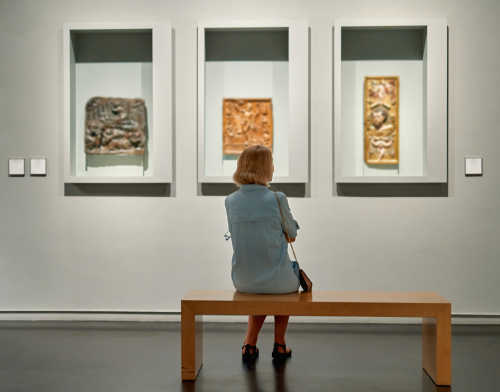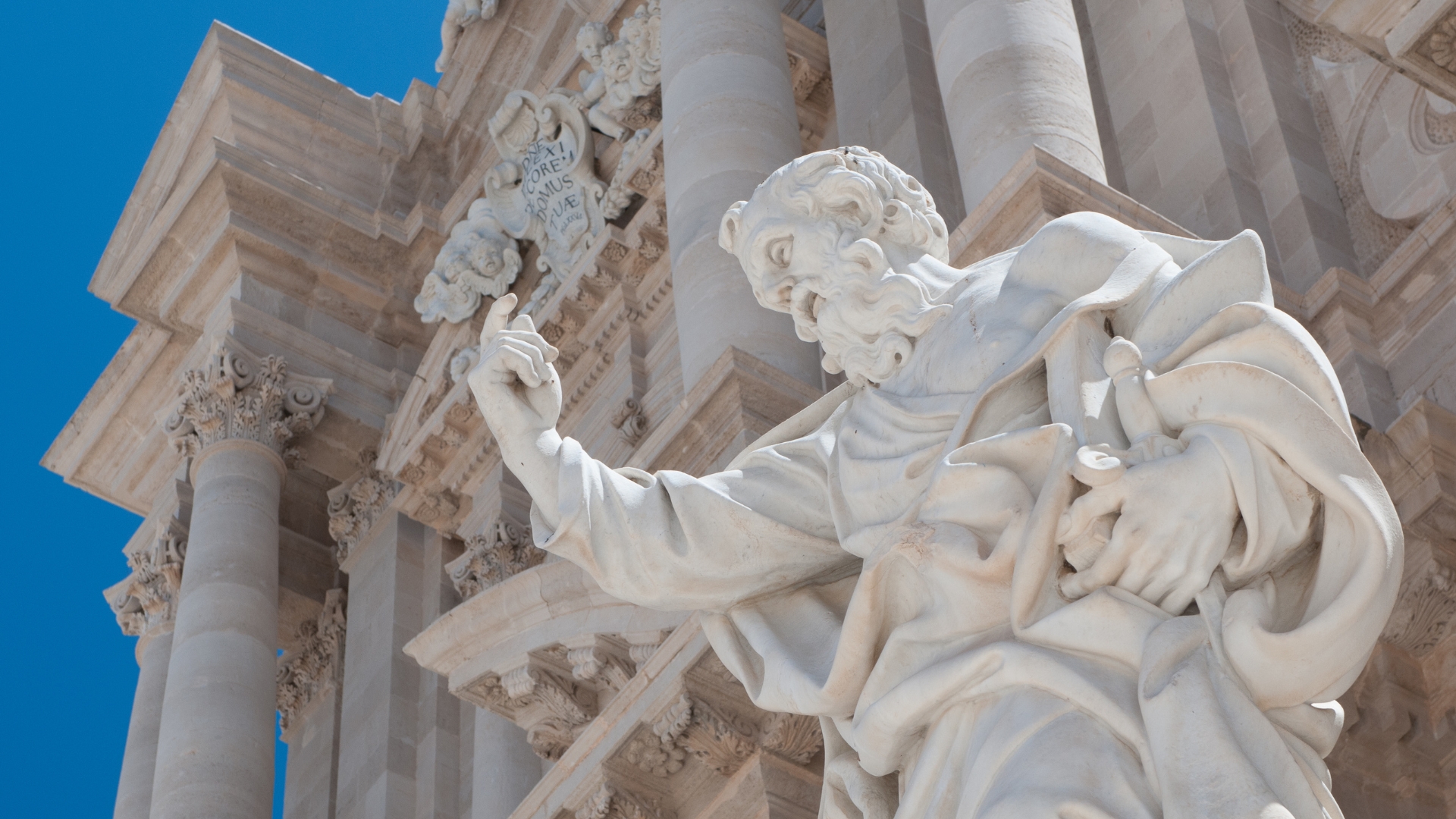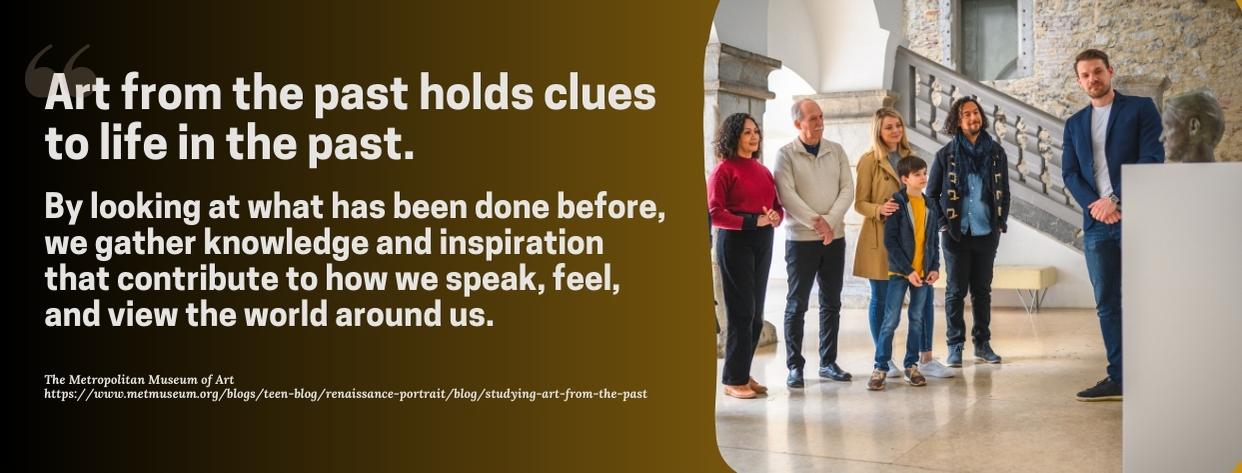Find Your Perfect School
While a lot of people may think that a bachelor’s degree in art and design focusing on art history is not the most “practical” degree, there are many opportunities in a variety of fields and businesses for which the degree could equip you. There are good reasons why this major is becoming more popular.
Additional Information: Best Online Bachelor’s in Art and Design with a concentration in Fashion
Graduates commonly become Archivists, Curators, and Museum Workers, which according to the Labor Statistics Bureau, is expected to grow 10 percent between 2022-2032.
Quick Summarization
Studying fine art, sculpture, architecture, painting, decorating, and other historical and artistic expressions is presumably the focus of Art History degree programs. However, the truth is considerably more complex than that. A bachelor’s in Art History degree online allows students to think critically and comprehend how context shapes the environment. People, history, norms, and value systems are studied through an art history concentration.
Quick audio summary:
Methodology
A Bachelor’s in Art History program should equip students with useful skills that can be used in various career paths—far beyond the conventional employment one may expect with the degree, including gallerist, archivist, and museum specialist.
We’ve followed the following criteria in listing each of the best online Art History degree programs at the baccalaureate level:
- Courses are fully online or in a hybrid learning format for added flexibility and cheaper overall cost.
- Institutions have received appropriate accreditation to ensure that online students receive top-notch higher education, have easier credit transfer, and obtain financial aid opportunities.
- The same exceptional on-campus faculty teach online courses with years of professional experience as art history professionals.
- The curriculum includes courses beyond art history to help students learn about other fields and open more career opportunities.
- Provides degree specializations in art history-related fields.
- Provides rigorous online coursework to enhance students’ analytical and critical thinking skills and prepare them for graduate coursework.
To find out more about our process of selecting the best schools and programs, please visit our Methodology page.
9 Best Online Bachelor’s in Art and Design with a Concentration in Art & History
Arizona State University
Location: Tempe, Arizona
Arizona State University’s Online Bachelor of Arts in Art – Art History offers accelerated courses, allowing students to graduate faster. While it’s encouraged that candidates apply with a minimum 2.75 GPA, those who do not meet the requirement can still qualify for the program by enrolling in online courses and achieving a minimum 2.75 GPA or higher.
This online art history bachelor’s degree program offers a curriculum designed and taught by researchers, artists, and designers. The coursework explores topics that allow students to gain a deeper grasp of cultural context, including issues related to art creation, appreciation, and consumption.
Courses of the program include:
- Art from Renaissance to Modernism
- Art from Prehistory Through the Middle Ages
- Art of Asia
- Art of Africa, Oceania, and the Americas
- Research Methods
In addition to the art history major courses, students will explore various topics related to anthropology, literature, history, science, and media and performance studies. It is one of the few online programs that allow undergraduate students to conduct independent research.
Lindenwood University
Location: St. Charles, Missouri
The Online Bachelor’s in Art History and Visual Culture at Lindenwood University is best for students with an associate degree in a related field. Students can take advantage of the fast-paced course sequencing and graduate in two years. Lindenwood also offers various financial aid opportunities to help students alleviate financial problems.
This online art history and visual culture degree helps students gain knowledge about artistic expression and production from a historical perspective. Courses are designed to help students gain competence in art history theory for various art-related professions.
A few of the topics you’ll explore include:
- Renaissance Art
- Medieval Art
- Art Theory & Criticism
- History of Non-Western Art
Students can expect to receive support from the school’s supportive faculty. Each student will have an academic and career advisor. There are also various job placement opportunities.
Mansfield University
Location: Mansfield, Pennsylvania
Mansfield University offers an Online Bachelor of Arts in Art History designed to help students pursue graduate school in the arts while preparing them for various job opportunities. This is one of the most flexible and customizable art history programs.
Through intense coursework, students will gain self-awareness and knowledge of the larger world while celebrating creative and cultural creativity. Students gain a strong liberal arts foundation focusing on visual arts, visual literacy, and global awareness. Topics include the historical and cultural roots of the visual arts, from cave painting to computer art.
A few of the courses students are required to take include:
- Art and Mythology of Ancient Greece
- Medieval Art
- Art of the Renaissance
- History of African-American Art
- Asian Art
The online undergraduate art history degree program aims to promote a lifelong understanding of the various cultural traditions in the visual arts throughout the world. It also seeks to foster an understanding of the institutions that house and protect art collections.
University of Arizona
Location: Tucson, Arizona
The University of Arizona’s online Bachelor of Interdisciplinary Studies allows students to gain information and develop skills for various career fields beyond art and design. This degree program is aimed at art history majors who want a broad understanding of art history beyond visual forms.
There are six emphases available, including Economy and Industry, Arts, Media and Entertainment, and Global and Intercultural Understanding. Those who want to focus on art and history can take courses in the Global and Intercultural Understanding emphasis. Students enroll in courses exploring various traditions, cultures, mores, practices, contributions, and issues different communities face.
Through the distinguished faculty and the program’s comprehensive curriculum, students will understand how the globe’s nations rely on each other on all fronts—economic, political, social, and cultural.
Regardless of the chosen emphasis, however, students will study the following courses:
- Jazz History
- Literature and Film
- Hip-hop Cinema
- Rock and American Popular Music
University of Massachusetts-Lowell
Location: Lowell, Massachusetts
The online Bachelor’s Degree in Liberal Arts at UMass Lowell is another interdisciplinary study designed for students who want a fully customizable degree program in art history.
This online bachelor’s degree allows students to concentrate on Art History while gaining another focus. The History concentration gives students a fundamental understanding of how art has evolved historically in various nations and cultures. It allows them to structure their views and ideas about art to present an informed critique that respects the artwork’s historical and cultural context.
In addition to having an Art History concentration, students can choose an additional one of the following eleven concentrations:
- Criminal Justice
- Economics
- English
- Gender Studies
- Graphic Design
- History
- Legal Studies
- Philosophy
- Political Science
- Psychology
- Sociology
For many, Philosophy is one of the best majors to pair with an art history major. Philosophy studies the nature of art, including ideas like interpretation, representation, expression, and form. This means philosophy and the arts share the same cognitive, moral, and social characteristics.
Academy of Art University
Location: San Francisco, California
The Online Bachelor’s Degree in Art History Program at the Academy of Art University offers the same curriculum rigor and has the same faculty as the on-campus degree program. Students are provided with topics that will develop their research and analytical skills to help them develop competency in the job market.
Students may choose between a Bachelor of Arts and a Bachelor of Fine Arts. Both degree programs have studio coursework requirements. Those who want intensive visual arts coursework with a hint of general studies should pursue a BA degree. On the other hand, students who want to focus on art and design with broader general studies should pursue the fine arts program.
Regardless of the chosen degree program, online students will encounter similar coursework, including the following:
- Traditional Materials, Tools, & Techniques in Art
- Looking at Art and Design
- Composition for the Artist
- Art History Through the 15th Century
Furthermore, online students receive the opportunity to Study Abroad in Europe. Those who participate in the Study Abroad program develop a deeper understanding of European history and the country’s creative culture. They’ll tour the country and visit Europe’s finest museums and architecture.
Penn State World Campus
Location: State College, Pennsylvania
Pennsylvania State University’s Online Bachelor of Arts in Letters, Arts, and Sciences is a highly preferred degree program for students who want to study the arts, humanities, and the natural sciences. Students can take art history electives as they please, allowing them to open more job opportunities beyond the arts and history.
PennState’s multidisciplinary degree program gives students a highly adaptable curriculum focusing on leadership and organizational dynamics without restricting them to a specific, single-discipline approach. Nevertheless, students will still enroll in courses preparing them for the social, cultural, and organizational difficulties in leadership positions.
Courses focus on developing students’ critical thinking and communication skills, research, theory, and application. The program’s curriculum includes courses in the Arts, Humanities, Health and Wellness, Natural Sciences, Social and Behavioral Sciences, and Integrative Studies.
Carlow University
Location: Pittsburgh, Pennsylvania
Carlow University offers a hybrid Bachelor of Arts in Art History that requires its online students to participate in professional experience at the on-campus Art Gallery.
The online bachelor in art history major at Carlow University emphasizes social justice’s cultural and aesthetic aspects and curatorial and museum studies. The curriculum offers courses that develop students’ writing, critical thinking, visual literacy, and curating abilities. Moreover, the program equips students with a deeper understanding of undergraduate research and exhibition development.
In addition to online coursework, students will be required to complete an internship and work under the supervision of art professionals. The university helps students get involved in Pittsburgh’s thriving art scene through interactions with artists, organizations, and rich local public art collections.
Students who want to pursue a master’s in art degree can enroll in an accelerated degree format during their sophomore year. The accelerated/alternate degree completion program allows students to incorporate graduate and undergraduate courses for a faster completion time.
Fort Hays State University
Location: Hays, Kansas
The Bachelor of Arts in Art History at Fort Hays State University is a hybrid degree program that gives students knowledge about the historical and cultural framework of the arts. Courses range from general studies to ancient and contemporary art history.
FHSU encourages its students to travel to domestic and foreign locations to further understand how art and design affect our daily lives. The program’s courses are designed to help students prepare for various careers and graduate study.
Coursework samples include:
- Ancient Art History
- 18th–19th Century Art History
- Visual Culture
- Readings in Art History
- Non-Western Art History
- Medieval Art History
- Renaissance and Baroque Art History
- 20th-Century Art History
Students can tailor the art history bachelor’s degree curriculum and choose their cognate courses in Philosophy, Literature, Music, History, or a second Modern Language.
Check this out: Best Online Bachelor’s in Art and Design with a Concentration in Creative/Design

Overview of Art History Degree Programs
Ordinary people often do not have the ability to comprehend how art affects our daily lives. For them, art just adds “aesthetics” to a place. This is not the case at all.
Art represents a culture, and, in return, culture represents people. It shapes how we interact with one another and aids in our understanding of who we are as people. Our inner ideas, feelings, and experiences are expressed via art. It’s also a creative expression that can be utilized to influence others or reflect on oneself.
There is no greater way to comprehend ourselves than through a creative output.
An art degree with a concentration in art history will not only teach you how to write lengthy essays on particular art trends and know the names of painters, dates, and places; it will also teach you the value of perspective, analysis, and critical thought through art history. You’ll encounter lengthy and complicated courses that will help you answer questions such as “How did our values come to be what they are today?” “Why do we think in such a way, and what does the future hold?”
As an undergraduate art and art history student, you’ll develop soft skills to prepare for many professional prospects:
#1 You’ll get to understand various cultures
Visual art tells stories from the past and describes historical events, allowing you to comprehend yourself better. Why do we adhere to the values we do? What shaped our way of thinking and worldview?
#2 You’ll have heightened critical thinking skills
The ultimate purpose of art history is to encourage you to analyze paintings, sculptures, and other works of art. You develop and apply critical thinking skills to support your analysis with logical and convincing arguments during the process. No skill is more essential in the modern world than that.
The most significant advantage of studying art history is you can customize it to your interests; not all degrees allow that. You could research the representation of mental health in various art forms, the representation of disabilities in the arts, the representation of LGBTQ+ groups in the arts, the accessibility of art to all people, the influence of indigenous cultures, or the ideal diversity in the media.

Careers for Graduates in Bachelor’s in Art History Degree Programs
Because degree programs in art and art history have a broad basis of technical and critical thinking skills, graduates will have various job opportunities. This is especially crucial in light of technological advancement. Employment for art and art history graduates is expected to grow 10 percent by 2032, according to the Bureau of Labor Statistics.
Popular career paths for art and art history graduates include:
Fine Artist
A fine artist produces visually beautiful and expressive works of art. They create their art using various techniques, including painting, sculpture, photography, and printmaking. Fine painters frequently thoroughly know both design concepts and art history.
The annual median pay of a Fine Artist is $53,140, with an expected growth rate of 4 percent from 2022 to 2032.
Museum Curator
The duty of a museum curator varies greatly since each museum has a unique philosophy, target audience, collection, and mission. However, their primary responsibilities include planning exhibitions, gathering artifacts or other works of culture, doing pertinent research, and managing inventories.
The annual median pay of Museum Curators is $53,420, with an expected growth rate of 10 percent from 2022 to 2032.
Graphic Designer
To suit the needs of their clients, graphic designers—who are also commercial artists—combine word and image-based material. A collection of best practices used by graphic designers to ensure readability and aesthetically beautiful content layouts enable efficient communication techniques.
The annual median pay of Graphic Designers is $57,9900, with an expected growth rate of 3 percent from 2022 to 2032.
High School Teacher
Graduates passionate about imparting their knowledge and skills to future art majors can pursue teaching. But, in some areas, they may need further educator training to obtain a teaching license. If you want to teach at a postsecondary level, you must acquire a Ph.D.
The annual median pay of a High School Teacher is $62,360, with an expected growth rate of 1 percent from 2022 to 2032.
Some of the more nontraditional career options for art and art history majors include:
- Fine Arts Expert Witness
- Investing/Art Lending (Pawning)
- Art Lawyer
- Architectural Conservator
- Art Insurance Adjustor
- Writer
- Fundraising Management
- Marketing
- Design
- Public Relations
- Management
Professional Organizations in Art and Art History
Students who gain membership in professional art and art history organizations receive various opportunities for networking, job placement, and financial assistance. The majority of these organizations provide career services, such as job boards where graduates can post their resumes.
National Art Education Association
The NAEA is a professional organization for art educators. K–12 art instructors, professors, aspiring art educators, and teaching artists are all members of the NAEA. The organization produces standards, offers teaching tools, organizes conferences, and runs summer programs.
Renaissance Society of America
The RSA focuses on societies and works of art from 1300-1700 and offers a website that connects users with opportunities in the sector. This organization also offers materials on architecture, art, history, literature, and exhibits. Candidates may submit articles for consideration for publication in Renaissance Quarterly, a journal of the RSA. Additionally, the group provides members with fellowships, a mentorship program, and an annual conference.
Medieval Academy of America
This organization focuses on the history, art, law, and economics of the Middle Ages. The company produces field guides, holds a yearly conference, and offers K–12 schooling materials. The website provides grant and award opportunities and access to the Medieval Digital Resources database for students, teachers, and academics.
Society of Illustrators
The Society of Illustrators fosters illustration art and manages a museum in New York City. The Society sponsors occasions, bestows honors, and plans artistic competitions.
College Art Association
The College Art Association encourages discussion between artists and art historians. The CAA publishes The Art Bulletin and Art Journal, organizes a yearly conference, and offers details on job possibilities.
National Association of Independent Artists
NAIA provides artists with networking opportunities, tools for organizing art displays, and career-advancing knowledge. Members can access a networking directory, savings opportunities, and the NAIA newspaper.
Scholarships for Art History Students
Numerous scholarship opportunities are available for aspiring art history majors. Financial aid programs are also maintained by many private nonprofits and professional associations for students pursuing degrees in art history or museum studies. For students majoring in art history who need financial aid, the three scholarships listed below serve as a good place to start.
Scholarship: Against the Grain Artistic Scholarship
Amount: $1,000
Requirements:
- Full-time Asian American students pursuing Art and Communications
- Full-time enrollment
Scholarship: Catherine W. Pierce Scholarship
Amount: Up to $3,600
Requirements:
- Full-time students pursuing Art or Art History degree
- A minimum 2.5 GPA
- Essay for consideration
Scholarship: The Frederic Whitaker and Eileen Monaghan Whitaker Foundation Scholarship Fund
Amount: $2,000
Requirements:
- Undergraduate students in Art History, Fine Arts, or Museum Studies
- A 3.0 GPA or higher
- Short essay

Frequently Asked Questions
How can I advance my career in Art History?
According to most employers in the art industry, promotions are based on experience. However, there are other opportunities you can take advantage of to advance your art history professional development strategy. You can pursue a graduate degree or certifications related to your field. By doing this, you may also be eligible for pay raises.
How long will earning a Bachelor of Arts degree in Art History take?
Usually, earning a bachelor’s degree in art and art history will take four years with a 120 credit hour requirement.
Can you get an Art History job with just a certificate?
A certificate in art history will not equip you with the complete skill set you’ll gain from a bachelor’s degree. Certificates in art and art history serve as complementaries that enhance your art history degree. They can only have a particular set of talents and act as a springboard for other subjects pertaining to the arts.
What are the most common courses in Art History majors?
Students majoring in art history often sign up for courses defining ancient and modern art historical periods. Students that major in this discipline frequently take courses like:
- Introduction to European Art
- Modern Art and Spiritual Thought
- Art Historical Methods
- Modern and Contemporary Art and Design
- Women in the Visual Arts
What do you need to get into an Art History school?
A high school diploma, SAT or ACT scores, a transcript, and at least one recommendation letter are the most common requirements for admission to programs in art history.
Key Points to Ponder
- Online undergraduate art history courses emphasize developing a comprehensive awareness of both the historical aesthetics and iconography of art and the specific socio-cultural circumstances in which works of art were produced.
- The prehistoric to the modern, as well as art theory and practice in western and non-western regions of the world, are some of the specific art periods that students can anticipate studying in their lessons.
- Graduates of bachelor’s degree programs in art history can pursue various careers, such as graphic design, teaching, curating, or becoming fine artists.
Before you go, see: Best Online Bachelor’s in Art and Design with a Concentration in Photography










